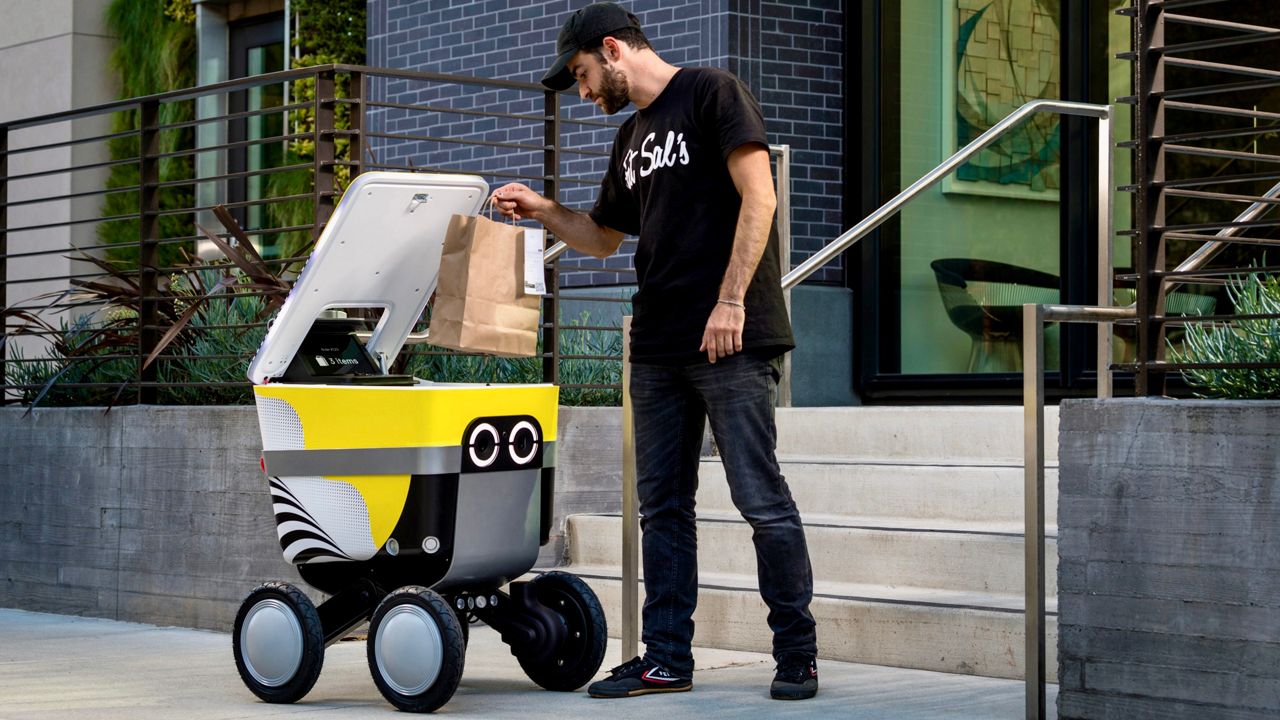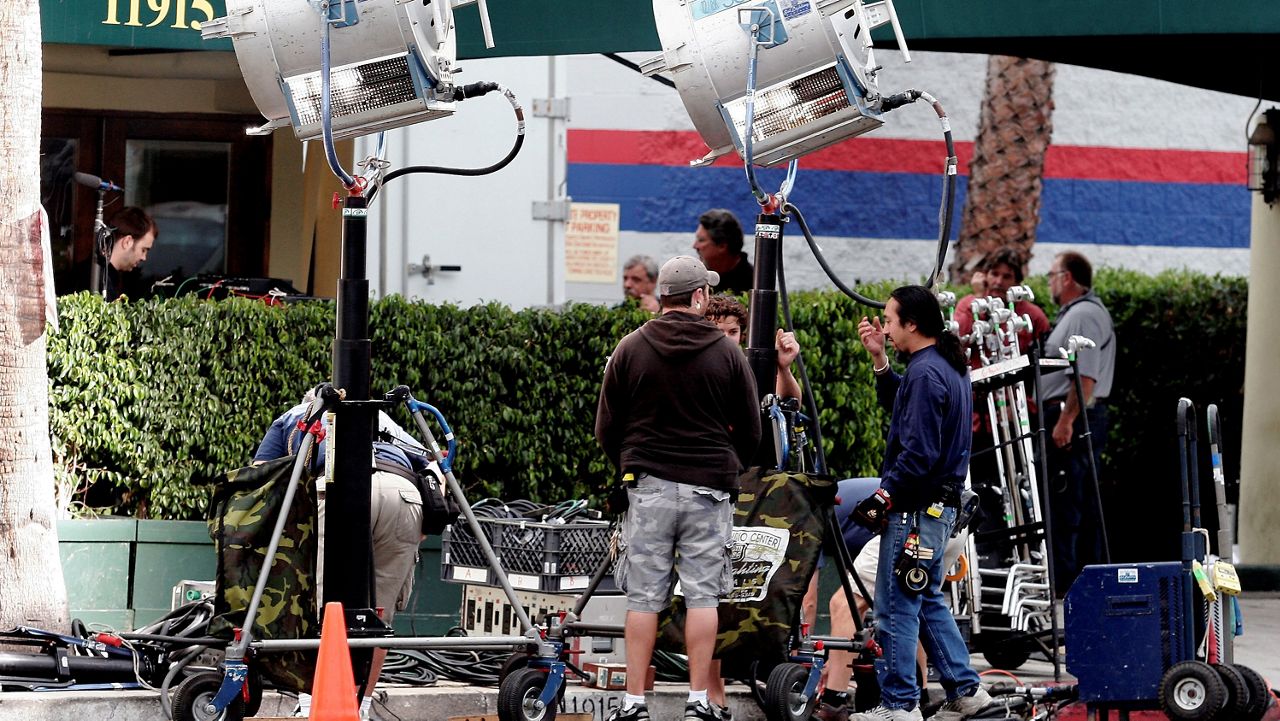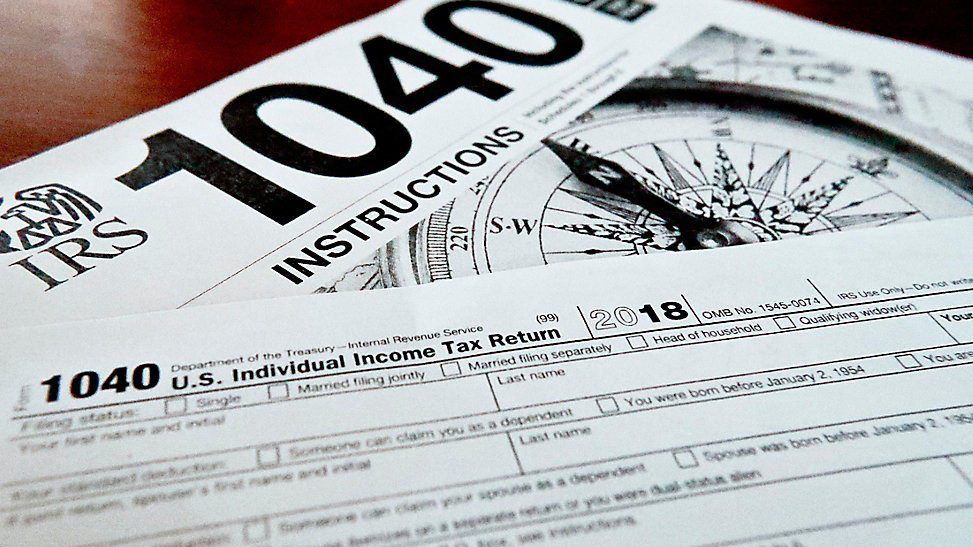HOLLYWOOD, Calif. — An Uber Eats-partnered sidewalk robot delivery service that has been piloting in Los Angeles for the past year plans to deploy up to 2,000 more autonomous delivery robots and expand to other cities across North America.
San Francisco-based Serve Robotics, which has an office in Hollywood, has grown 30% monthly, with more than 200 Los Angeles restaurants using its sidewalk delivery service since they entered the LA delivery market in 2022.
“It’s been an incredible experience when you’re pioneering something like this to a city,” said Ali Kashani, the co-founder and CEO of Serve Robotics, in a phone interview with Spectrum News. “The team and I right now are in the right time and the right place to be working on this and part of history. We are learning how to make robots friendly and likable while cutting down on traffic congestion.”
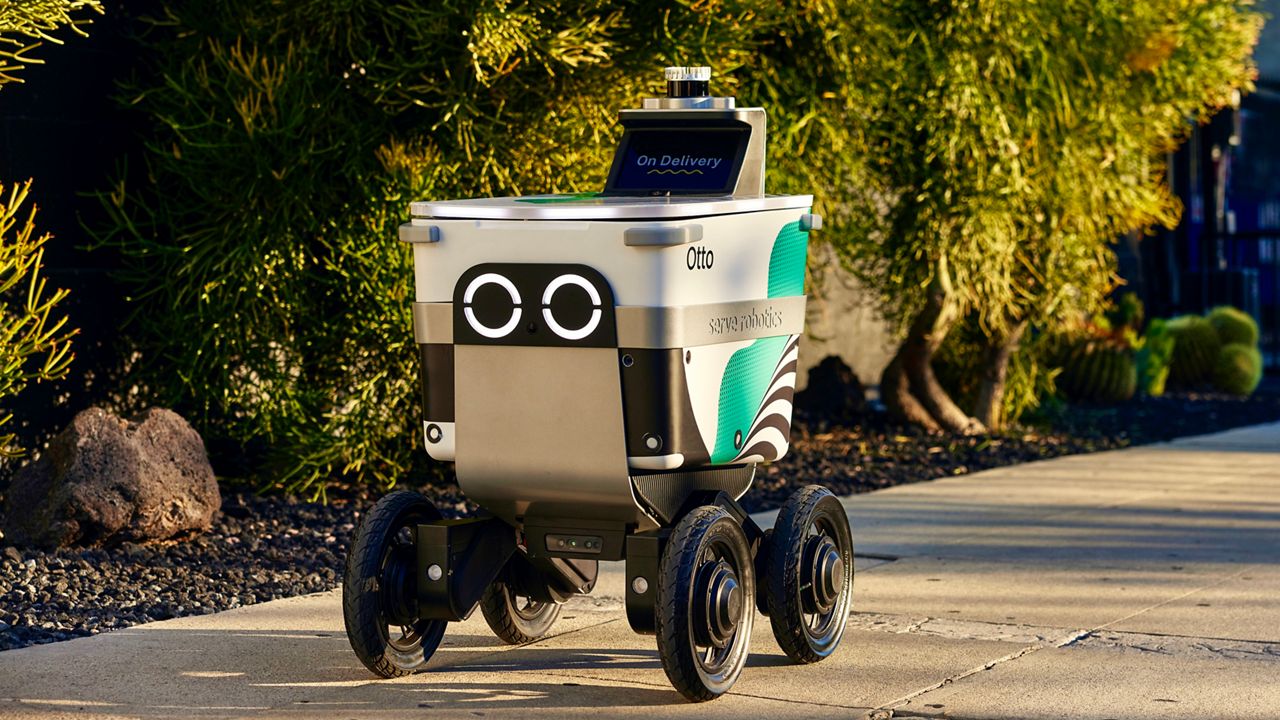
The growth of Serve Robotics, which develops and operates autonomous sidewalk robots, highlights the demand for alternative food, grocery, or last-mile deliveries as more consumers look to receive their items quicker, cut down on delivery costs and help the environment.
The company on Tuesday said it plans to deploy up to 2,000 sidewalk delivery robots in its partnership with Uber Eats and expand across Los Angeles and other cities such as San Jose, Dallas and Vancouver, Canada, Kashani said. He did not disclose the financial terms of the deal.
Serve began in 2017 as the robotics division of Postmates before spinning off as an independent company in 2021. Since then, Kashani said that the company has raised about $40 million and is backed by companies such as Uber, Nvidia, 7-Eleven’s 7-Ventures and more. The company employs about 70 people in San Francisco and Los Angeles.
The company partnered with Uber Eats and began piloting its electric-powered autonomous sidewalk delivery robots in 2022 in neighborhoods such as Hollywood, West Hollywood, Fairfax District and other parts of Los Angeles.
Kashani said the company chose Los Angeles because of its high-density population and notorious traffic congestion. The city is the second-largest delivery market in the country, behind New York.
“Taking that [traditional delivery] traffic off the road is really valuable,” he said.
Serve’s sidewalk delivery robot is about the size of a small shopping cart, about waist high, with four wheels and a payload dimension that could fit two large shopping bags or four large pizza boxes and carry up to 50 pounds of food or items.
It looks like a life-size Wall-E robot.
The electric-powered robot uses artificial intelligence and is decked out with several cameras that look like eyes and sensors to navigate its surroundings better. Its AI detects when other people or cars are in its path and knows when to avoid collisions.
“It’s able to do a lot of things by itself,” said Kashani, adding that a human is supervising its movements.
A customer would place their food order on the Uber Eats app. After placing the order, the app would notify them if they prefer to receive their items via a sidewalk delivery robot. It does not cost a customer extra to use a sidewalk delivery robot.
The robot travels up to seven miles per hour on the sidewalk and has a delivery range of about a mile. Kashani said customers usually receive their items within 30 minutes.
Upon arrival, the robot would send the customer a message that it has arrived and a unique code to input to open the payload lid to ensure that only the customer can retrieve the order.
The robots are deployed in the morning and come home at night, said Kashani.
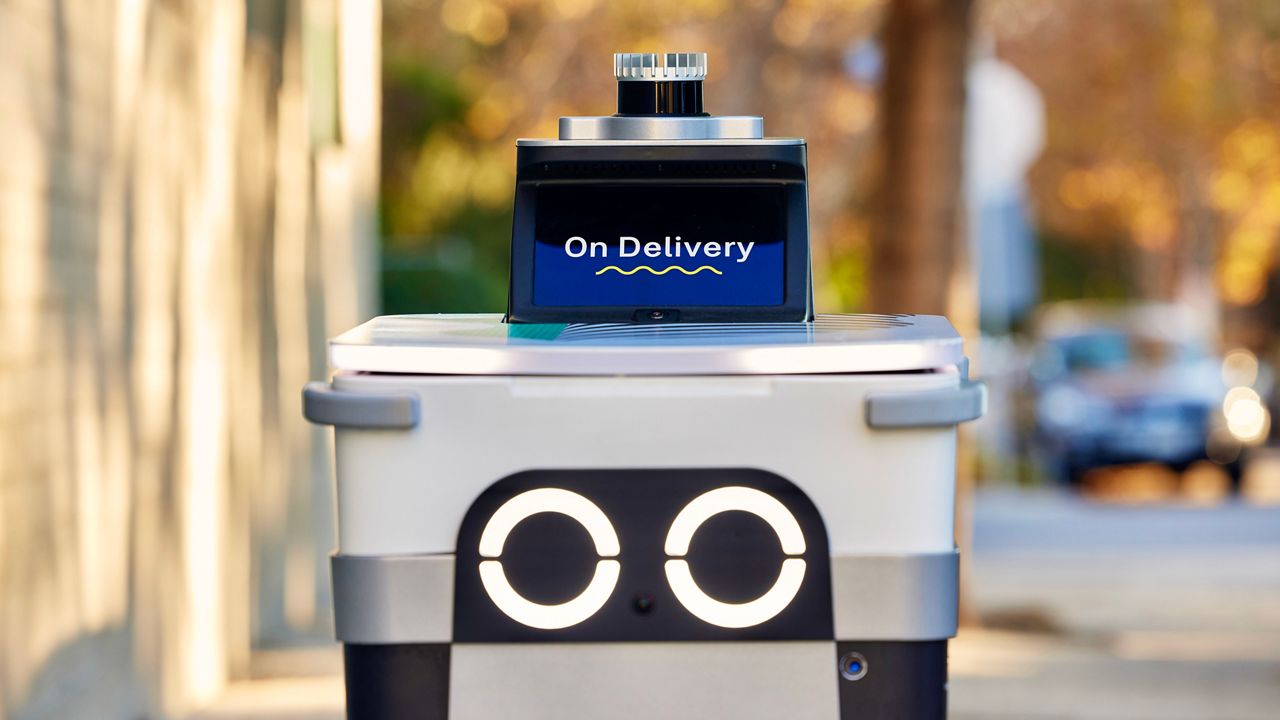
Kashani said the company has deployed over 100 sidewalk delivery robots around Los Angeles and plans to “increase the number of them over time.” The company has partnerships with 7-11, Walmart and Pizza Hut.
Kashani said the sidewalk delivery robot is more efficient than standard delivery, where a driver picks up an item from a restaurant or grocery store, places it inside their vehicle, drives through traffic, and drops it off at the customer’s location.
He said most deliveries and people running errands or picking up food or items at a local store journey within a one-mile radius.
But more cars on the streets lead to congestion and traffic. He said it adds to air pollution and could even lead to death and injury.
Sidewalk delivery robots are better at handling last-mile deliveries, he said.
“Why deliver a two-pound burrito in two-ton cars?” said Kashani. “That’s a big problem. Delivery robots are cheaper, safer and greener.”
“And you don’t have to tip the robot when you receive your order,” he added.






